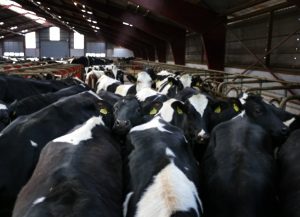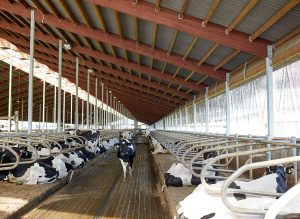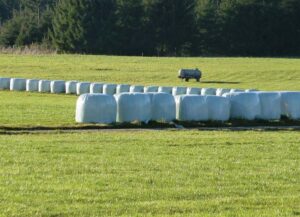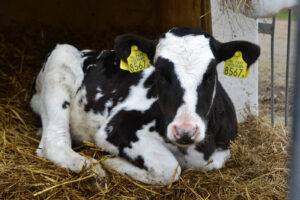Joaquín Ventura & Fernando Díaz
When cows are grazing it is very important to keep them in the paddocks where they should consume their forage. For this purpose, one can use traditional fences or electrified fences, the former system is expensive to install and maintain and is not versatile at all; the latter while more versatile require of one or more operators to move them to delimit the paddocks. In addition, wood or wire fences can cause injury to animals.
What are virtual fences?
A good alternative is the use of virtual fences where each cow wears a collar that triggers a warning auditory signal, when the wearer approaches the boundaries of a plot that has been marked by a GPS. If the animal does not turn around when listening to the signal and continues to walk towards the edge of the plot, it receives an electrified discharge as with the traditional electrified fences.
In time cows learn to associate the audio signal with the subsequent discharge and, after a while, respond appropriately to the sound without activating the electric shock. A better understanding of how this learning process takes place helps ensure all animals have adapted well and quickly to these virtual fencing systems, so that the electrified stimulus is required less often.
Cows were trained in one plot with electrified fence and the other without it
An Australian research team (Verdon et al., 2020) conducted a study to see if previously being grazed with electrified fences accelerated or slowed down the learning of animals equipped with collars on lots with virtual fences. The researchers used 30 weaned heifers, crosses of various dairy breeds (Holstein x Hereford, n = 15; Jersey x Hereford, n = 7; Holstein x Jersey, n= 6; Holstein x Jersey x Hereford, n = 2).
The heifers were 100 days old when the 114-day experimental period began and had no previous experience with electrified fences. Two lots of animals were assigned to two different plots, one with electrified fence and the other without it. The behavior of the animals with fences was monitored by cameras.
After 95 days in their respective paddocks, the animals were mixed again into two other lots, so that half of each came from the electrified paddock and the other half from the un-electrified paddock. Both animal groups were blocked by age (201 ± 8 days), breed, weight (167.6 ± 28.6 kg) and the coefficient of variation in weight, when mixing (17.1%) the heifers and fitting them with the collars. These two lots were then taken consecutively to the experimental pens, where a “bait” of feed had been placed to attract the animals outside a theoretical delimited area (in this instance the GPS was not used, the collars were manually activated when the heifers approached the restricted area).
Cows trained in a park with an electrified fence learn earlier to respect virtual fences
Animals approaching the limit of the restricted area were first given an auditory stimulus of 84 decibels for 2 seconds, and if they did not stop and turn around, they were given the electrified stimuli (120 mW for 0.5 seconds), until the heifer stopped and turned around. In the third training session the heifers that had trained in the with electrified fence received fewer discharges than those that had been kept without it. In addition, by looking at the video log, the more interactions the heifers had with the electrified fence previously, the faster they associated the sound with the subsequent discharge and learned to modify their behavior.
Interestingly, the experiment defied the authors’ starting hypothesis, which assumed the animals that had previously received electrified stimuli would have had more difficulty associating the audio warning and subsequent discharge. Under the conditions of this study, heifers who had previous experience with electrified fences learned earlier to respond to collars in virtual fences, albeit with important individual differences.
Reference
Verdon M, Lee C, Marini D, Rawnsley R. 2020. Pre-Exposure to an Electrified Stimulus Primes Associative Pairing of Audio and Electrified Stimuli for Dairy Heifers in a Virtual Fencing Feed Attractant Trial. Animals. 28:10.
© 2021 Dellait Dairy Knowledge Center. All Rights Reserved.









